September 2012
September 24, 2012
Follies of the Mad Men #190
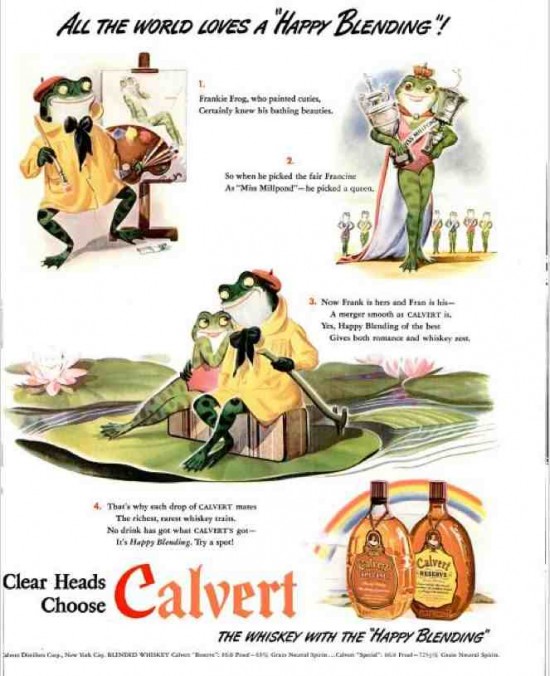
Yeah, the first thing I think of when I get thirsty for booze is "Froggy Went a-Courtin'" and sexy swimsuit frogs.
Original ad here.
Posted By: Paul - Mon Sep 24, 2012 -
Comments (7)
Category: Animals, Anthropomorphism, Business, Advertising, Products, 1940s, Alcohol
September 23, 2012
World’s Largest Snake at Kansas City Haunted House
Weird on so many levels!! At 350 pounds and 25 feet long -- this snake called "Medusa" is on display at "The Edge of Hell", a haunted house in Kansas City. Held in the picture below by what I am hoping is some of the "cast":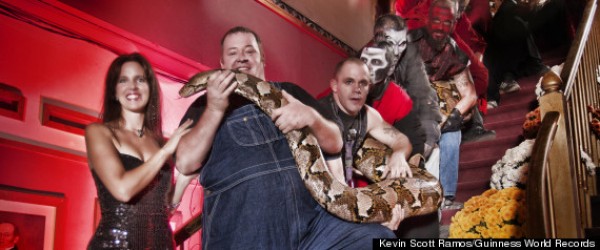
Here's the link to the story:
http://www.huffingtonpost.com/2012/09/21/medusa-worlds-longest-snake_n_1904214.html?utm_hp_ref=weird-news#slide=1514068
which includes juicy details like "Medusa does pretty well on a diet that includes rabbits, hogs and deer, served to her every two weeks."
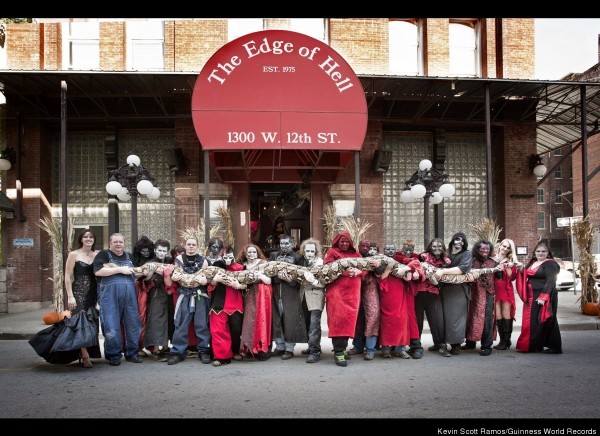
Her handler Larry Edgar keeps her away from the crowds, reminding us that "she always has the upper hand", and that "people have been cut out of reticulated pythons before." Which of the cast members could be cut out of the python next?
Let the Halloween festivities begin!!
Posted By: gdanea - Sun Sep 23, 2012 -
Comments (6)
Category: Animals
The Art of Jonathon Keats

Jonathon Keats
But Keats has been active since then. He's got a new installation titled "Cloning Celebrity" at San Francisco's Modernism Gallery. Here's a description:

Dan Schifrin, writing in jweekly.com, describes some of Keats's other projects:
In 2004, in collaboration with U.C. Berkeley geneticists, Keats attempted to genetically engineer God in a laboratory. Keats determined that God bore a striking genetic similarity to algae, but — employing proper scientific language — he acknowledged that the study was "not definitive."...
He also was commissioned by the Contemporary Jewish Museum to make a modern version of manna, which he interpreted as a pillbox full of placebos — manna being whatever medicine was needed at that moment.
Posted By: Alex - Sun Sep 23, 2012 -
Comments (7)
Category: Art
Baldwin Hills Dam Disaster
Today we are used to seeing disasters unfold live on TV. But in 1963, it was all new.
More info here.
Posted By: Paul - Sun Sep 23, 2012 -
Comments (5)
Category: Disasters, 1960s, TV News
September 22, 2012
Dollar Dance
If money could talk.....
Posted By: Paul - Sat Sep 22, 2012 -
Comments (6)
Category: Money, PSA’s, Cartoons, 1940s
The Afro Chair

Do afros make you think of chairs? That's what they made Korean designer Yangsoo Pyo think of, inspiring him to create the "Afro Chair." He writes:
Therefore, there is no danger of destroying women's stockings or knitwear. In fact the chair is very comfy. The manufacturing process of this chair begins with a simple iron frame. Then, the springs are used instead of the normal sponge and leather cover.
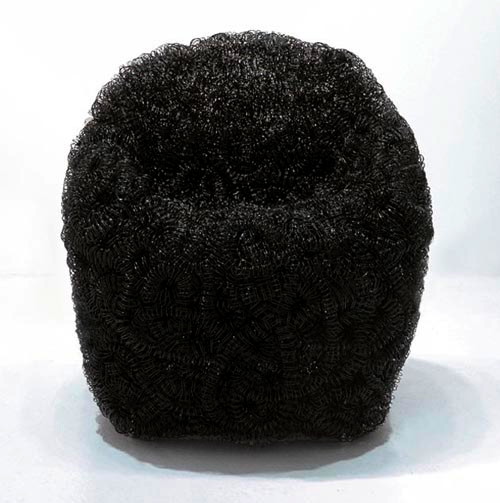
More in extended >>
Posted By: Alex - Sat Sep 22, 2012 -
Comments (4)
Category: Furniture, Hair Styling, Hair and Hairstyling
September 21, 2012
Camera Stealing Octopus
It sounds like a joke, but when the octopus wants the camera, you may have to chase it to get the camera back.Some great video, sound and subtitles, plus a free ride for the octopus on a spear gun. No octopi were injured in the making of this video.
Posted By: gdanea - Fri Sep 21, 2012 -
Comments (4)
Category: Fish
The Chest Pencil

This is an unusual object on display at the London Science Museum, which offers this explanation:
Posted By: Alex - Fri Sep 21, 2012 -
Comments (8)
Category: Inventions
Wolverine Soap

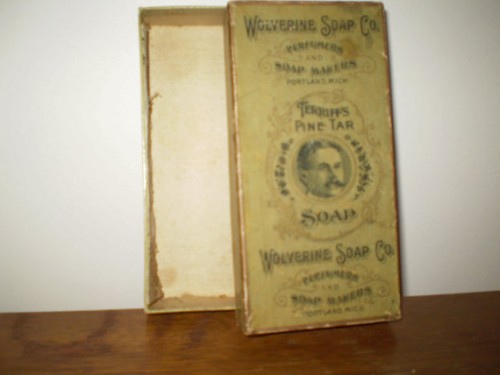
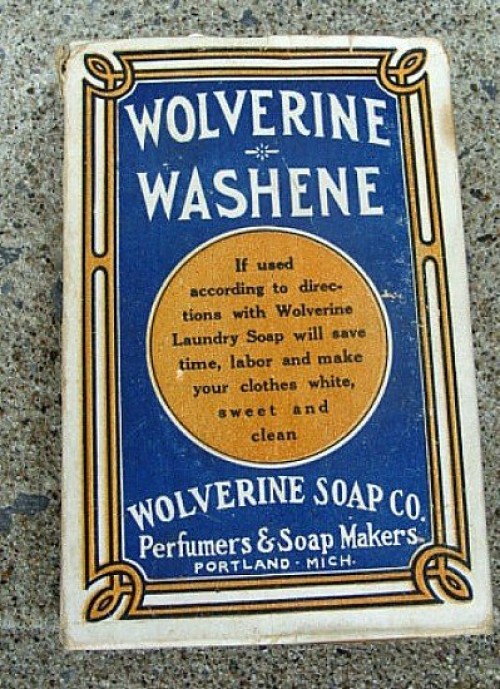
Even before a certain blade-wielding comicbook character pre-empted the name of "Wolverine," could it possibly have been a good idea to name your product after a vicious, pint-sized killer beast?
"Wolverine Soap--it will rip the dirt off your skin, and your skin with it!"
No wonder the pitchman in the ad below is working so hard to find sales reps.


Posted By: Paul - Fri Sep 21, 2012 -
Comments (5)
Category: Animals, Business, Advertising, Products, Death, Destruction, Hygiene, Baths, Showers and Other Cleansing Methods, 1920s
September 20, 2012
Bear Attacks Man—Provokes Smiling and Laughing
When bears attack, men and women....laugh and play with the bear.It is Russia after all. I'm just surprised it's not Putin. The guy does get bit on the hand later, but who can be upset? Play with bears -- you will get bitten.
Posted By: gdanea - Thu Sep 20, 2012 -
Comments (3)
Category: Animals
| Get WU Posts by Email | |
|---|---|

| Who We Are |
|---|
| Alex Boese Alex is the creator and curator of the Museum of Hoaxes. He's also the author of various weird, non-fiction books such as Elephants on Acid. Paul Di Filippo Paul has been paid to put weird ideas into fictional form for over thirty years, in his career as a noted science fiction writer. He has recently begun blogging on many curious topics with three fellow writers at The Inferior 4+1. Chuck Shepherd Chuck is the purveyor of News of the Weird, the syndicated column which for decades has set the gold-standard for reporting on oddities and the bizarre. Our banner was drawn by the legendary underground cartoonist Rick Altergott. Contact Us |

